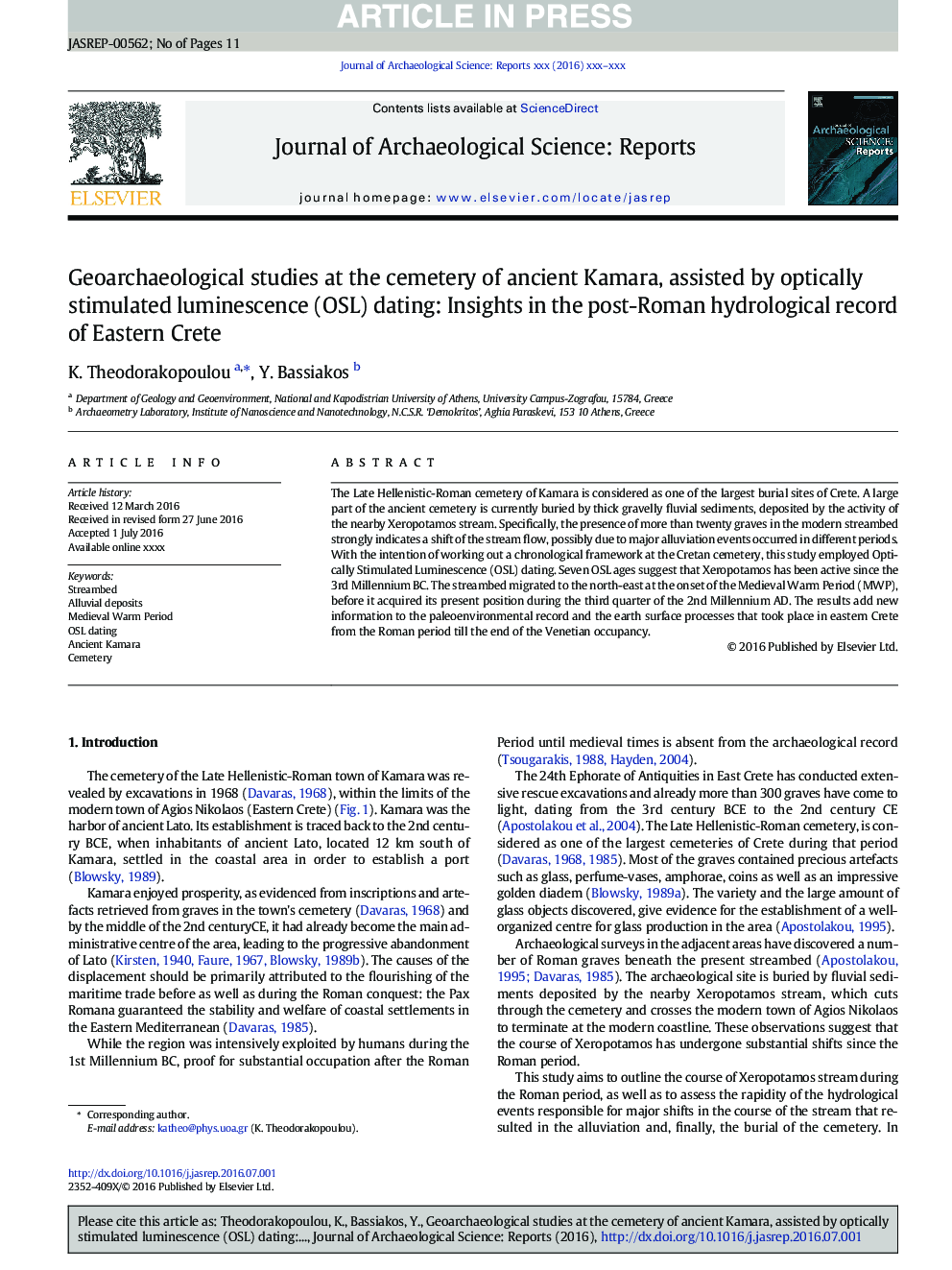| Article ID | Journal | Published Year | Pages | File Type |
|---|---|---|---|---|
| 5112466 | Journal of Archaeological Science: Reports | 2017 | 11 Pages |
Abstract
The Late Hellenistic-Roman cemetery of Kamara is considered as one of the largest burial sites of Crete. A large part of the ancient cemetery is currently buried by thick gravelly fluvial sediments, deposited by the activity of the nearby Xeropotamos stream. Specifically, the presence of more than twenty graves in the modern streambed strongly indicates a shift of the stream flow, possibly due to major alluviation events occurred in different periods. With the intention of working out a chronological framework at the Cretan cemetery, this study employed Optically Stimulated Luminescence (OSL) dating. Seven OSL ages suggest that Xeropotamos has been active since the 3rd Millennium BC. The streambed migrated to the north-east at the onset of the Medieval Warm Period (MWP), before it acquired its present position during the third quarter of the 2nd Millennium AD. The results add new information to the paleoenvironmental record and the earth surface processes that took place in eastern Crete from the Roman period till the end of the Venetian occupancy.
Related Topics
Social Sciences and Humanities
Arts and Humanities
History
Authors
K. Theodorakopoulou, Y. Bassiakos,
